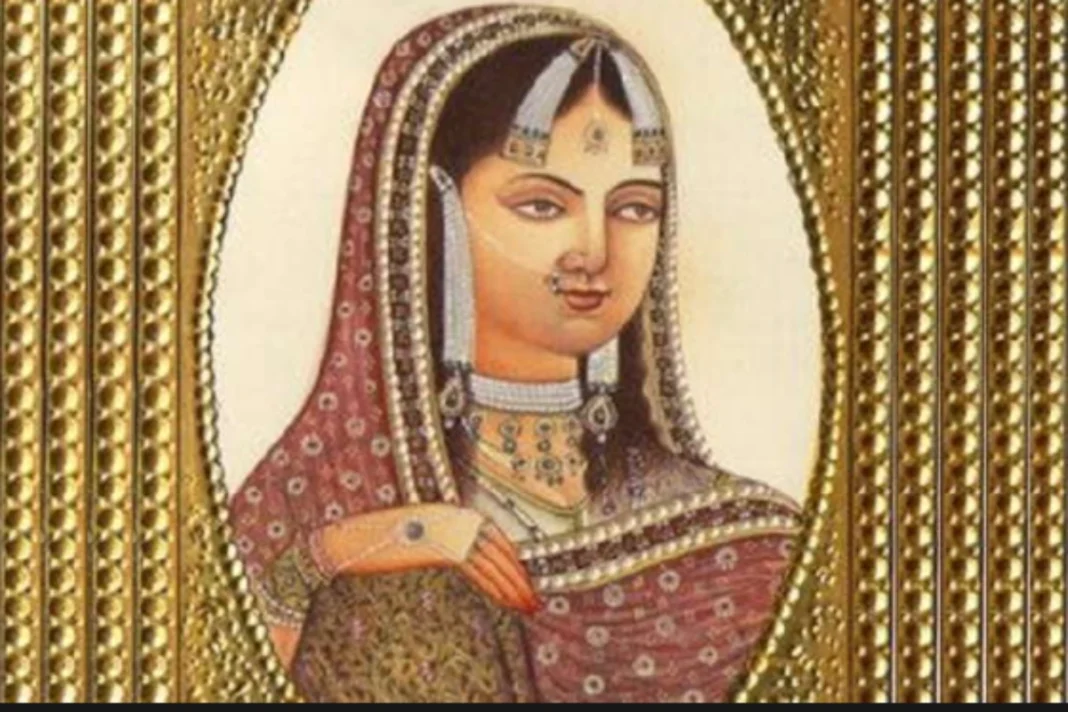Jodha Bai: The third Mughal emperor Akbar’s primary and first Rajput wife was named Mariam-uz-Zamani. Born to Raja Bihari Mal (or Bhar Mal) of Amer (Jaipur), she was a Rajput princess. Her real name is unknown, although Harkhan Champavati is mentioned in an 18th-century Kachwaha Rajput genealogy, to which she belonged. Her other names are Hira Kunwari, Harkha Bai, and Jodha Bai; the last one suggests that she may have been a princess of Jodhpur from birth.
Jodha Bai’s Union with Akbar as a Diplomatic Triumph
Her union with Akbar was a political and diplomatic coup that signified Raja Bihari Mal’s recognition of Akbar’s suzerainty. The marriage was a pivotal moment in the history of the Mughal Empire since it led to a progressive shift in the social and religious policies of the empire, making them more accommodating to the diverse and multireligious population. Jahangir, the eldest surviving son of Akbar and the fourth Mughal Emperor, was born to Mariam-uz-Zamani.
Early Life
She was born in the Amer kingdom in approximately 1542 to Raja Bihari Mal, a Rajput prince, and his spouse, Rani Mainavati. Amer, subsequently called Jaipur, is located in the Indian state of Rajasthan today. After learning about Bihari Mal’s assistance to Mughal commander Majnun Khan Qaqshal in 1556, Akbar invited Bihari Mal to his court in Delhi and bestowed upon him a reward. After Mirza Muhammad Sharaf-ud-din Hussain, the Mughal hakim of Mewat and brother-in-law of Akbar, was appointed Mughal ruler of Mewat in 1562, the Kachwahas came under persecution.
Kachwahas Expelled from Amer by Mirza’s Onslaught
Bihari Mal and the Kachwahas were driven from Amer and forced to retreat into the hills and forests when Mirza stormed the city. Even when Bihari Mal pledged to provide Mirza peshkash, or fixed tribute, and held his son Jagannath and two nephews, Raj Singh and Khangar Singh, captive until the agreed upon amount was paid, Mirza nevertheless prepared for another assault of Amer. At this moment, while the emperor was travelling to Ajmer to pay respects to the grave of Moinuddin Chishti, Bihari Mal contacted Chaghtai Khan, a courtier of Akbar, and described the situation of the Kachwahas.
Chaghtai Khan’s Predicament Prompts Emperor’s Action
After learning about Chaghtai Khan’s predicament, Akbar called Bihari Mal to his court. Bihari Mal saw the emperor at his camp at Sanganer on January 20, 1562. Akbar accepted Bihari Mal’s suggestion to give his oldest daughter Hira Kunwari’s hand in marriage. After Akbar came in Sambhar, Rajasthan from Ajmer, Mirza gave him Jagannath, Khangar Singh, and Raj Singh. On February 6, 1562, Akbar and Hira Kunwari’s marriage ceremony took place in the imperial military camp at Sambhar.
Jodha Bai’s Ascension
While Mariam-uz-Zamani was the chief wife of Akbar and held great power in the imperial harem as the mother of the heir-apparent, her status as the emperor’s mother increased after her husband passed away on October 27, 1605, and her son Salim succeeded his father Jahangir as the fourth Mughal Emperor on November 3 of the same year.
During her son’s reign, she became one of the most remarkable women traders at the Mughal court. Her financial skill and foresight allowed her to manage worldwide trade in a variety of goods, including spices and silk. Among other noblewomen, she was arguably the most ambitious trader in history.
Jodha Bai’s Ownership of Pilgrim Return Ships
She was the owner of ships that returned pilgrims home after transporting them to Mecca, the holiest place in Islam. Rahīmī, the largest Indian ship cruising the Red Sea, was among them and was dubbed the “great pilgrimage ship” by the Europeans. In 1613, a Portuguese pirate raiding party took control of a ship carrying a substantial load of 100,000 rupees and roughly 600–700 passengers.
Emperor Jahangir, the devoted son of Hindustan’s queen mother, was infuriated to learn of the Portuguese official denial of the ship’s and its passengers’ return. He issued orders to seize the Portuguese town of Daman and to imprison any Portuguese people living under the Mughal Empire. He also took possession of Jesuit churches.
Jeweled Offerings from Nobility to Queen Mother on New Year’s
Each nobility would give a jewel to the Queen Mother during the New Year’s festivity. One obvious sign of Jahangir’s great affection for his mother is the authority he gave her to issue firmans, which are formal instructions that typically remained the emperor’s sole power. Like Mumtaz Mahal, the wife of Shah Jahan, and Nur Jahan, the wife of Jahangir, only few noblewomen in the Mughal Empire had this privilege.
The Queen Mother commissioned a great deal of architectural work, including the construction of gardens, mosques, and water features. Several royal events took place in her home, such as the solar weighing of Jahangir, the marriage of Jahangir’s son Shehzada Parviz to Princess Jahan Banu Begum, the daughter of Mughal prince and second surviving son of Akbar, in 1606, and Jahangir’s marriage to Koka Kumari Begum, the eldest daughter of Yuvraj of Amber Jagat Singh, on June 17, 1608.
Jahangir’s Commemorative Act for Mariam-uz-Zamani
In commemoration of his mother, Jahangir erected the Begum Shahi Mosque, also referred to as “The Mosque of Mariyam Zamani Begum,” between 1611 and 1614. It’s in present-day Pakistan, in the Walled City of Lahore.
Keep watching our YouTube Channel ‘DNP INDIA’. Also, please subscribe and follow us on FACEBOOK, INSTAGRAM, and TWITTER


